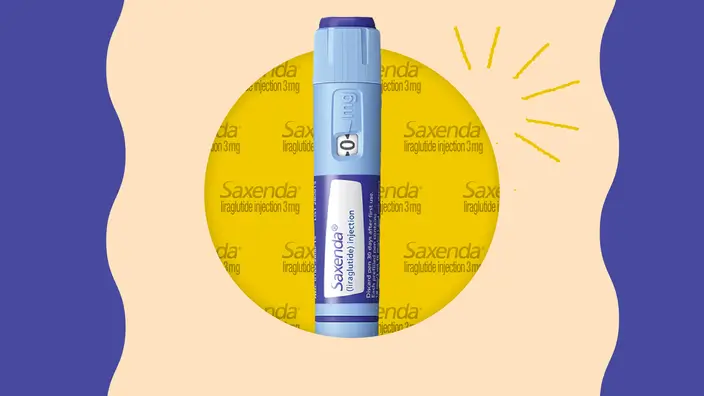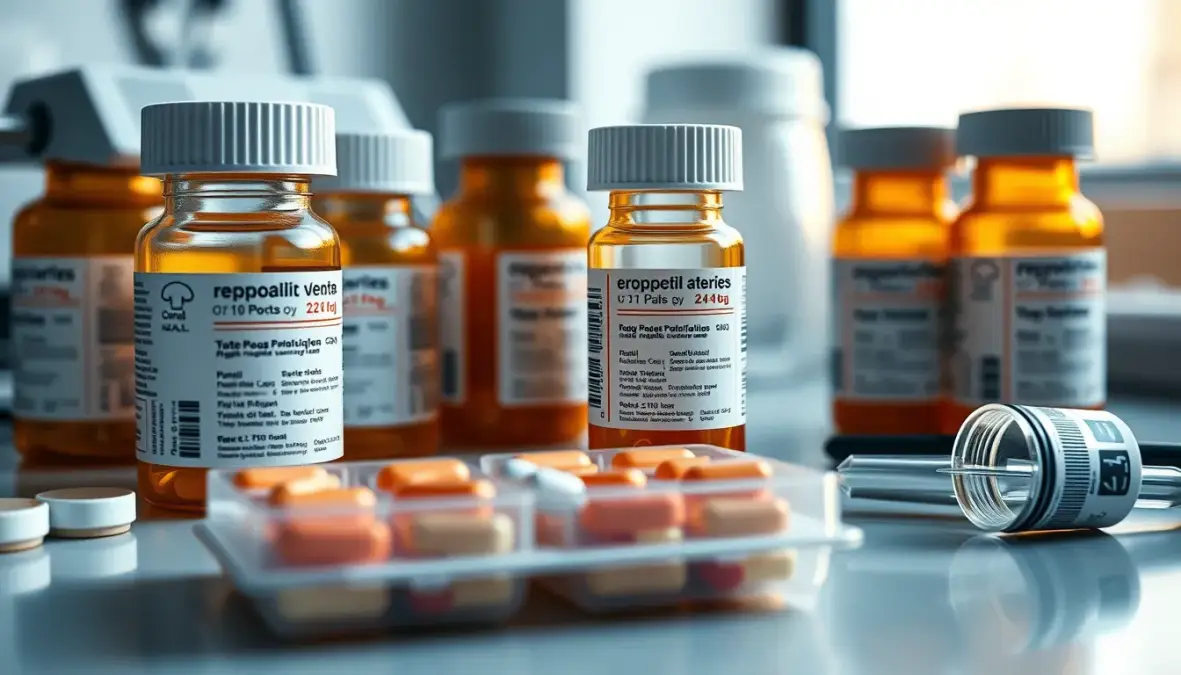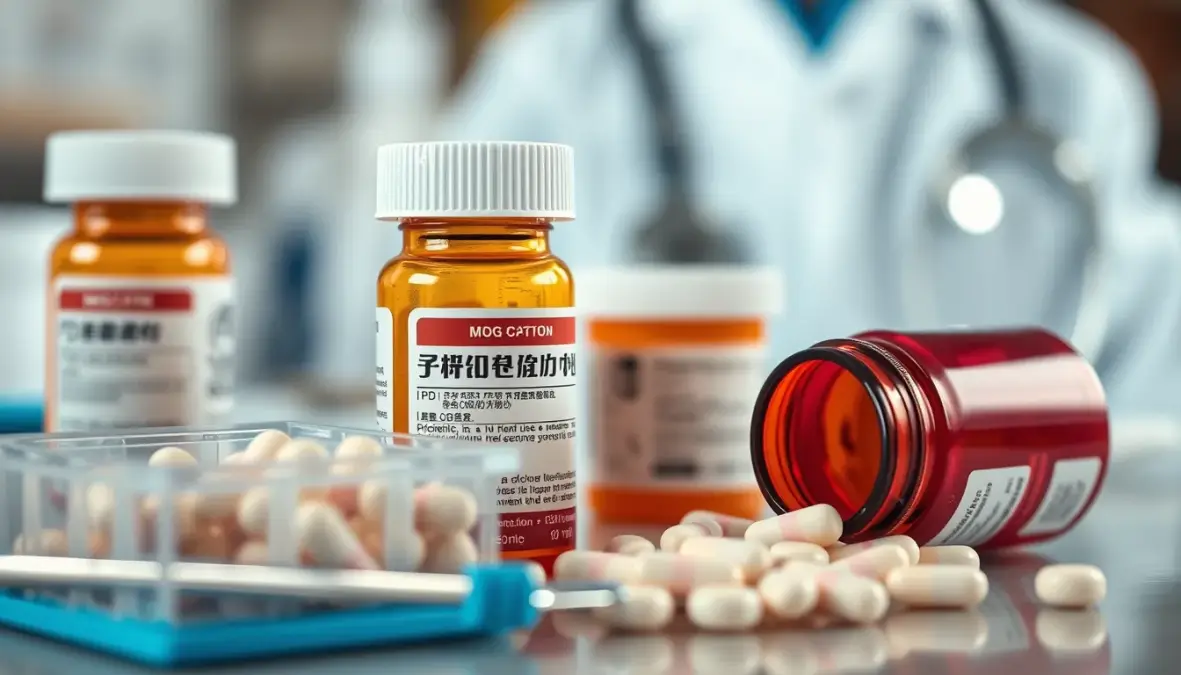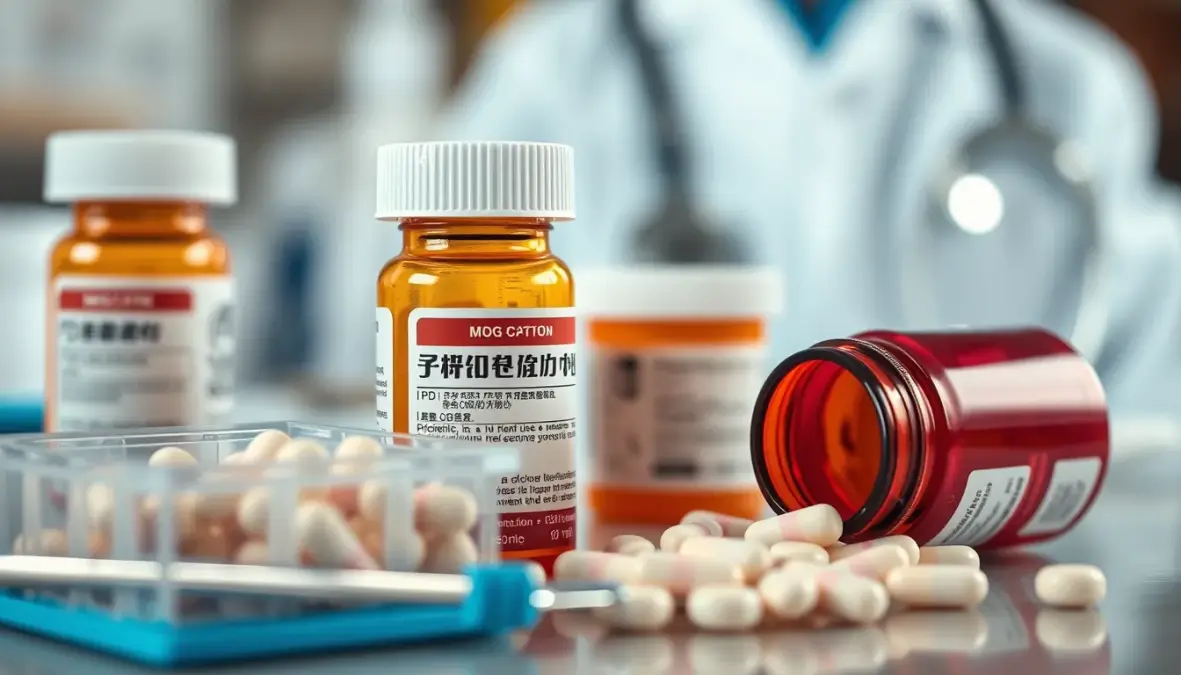Saxenda injection has become a popular tool among people who want to lose weight in recent years. It is an injection containing liraglutide, a substance designed to support the process of reducing appetite and regulating blood sugar levels. Saxenda injections are often recommended by doctors, but it is important to understand how to inject Saxenda correctly, where to inject Saxenda, what the risks are, and whether there are any side effects that you should be aware of. In the following guide, we will elaborate on this treatment, present professional information, and how it fits into an overall healthy lifestyle plan.
Introduction: What is the Saxenda injection?
Saxenda injection is a medical treatment that helps people who are overweight or obese. The active ingredient in the injection is Liraglutide, the main ingredient in the drug Victoza, which is intended for type 2 diabetes patients. However, the dose of liraglutide in Saxenda is adjusted for use for weight loss.
Saxenda was developed by the pharmaceutical company Novo Nordisk, and is marketed worldwide with approvals from regulatory authorities such as the US FDA and European health authorities. Israel has also approved its use, subject to a doctor's prescription and in accordance with the appropriate indications.
Treatment with Saxenda injections can mainly help reduce appetite. The active ingredient acts on the control centers in the brain and provides a lasting feeling of satiety. Therefore, those who adhere to a balanced diet alongside treatment may feel less hungry and reduce food intake.
It is important to remember that Saxenda injections are not a "magic" solution. Treatment is recommended as part of a healthy lifestyle that includes physical activity, dietary changes, and professional support. In any case, it is advisable to consult a specialist before starting treatment, and to ensure that there is no conflict with other medications or medical conditions that prevent use.
How do Saxenda injections work and how are they related to weight loss?
The main mechanism of action of liraglutide
Liraglutide is an analogue of GLP-1 (Glucagon-Like Peptide-1), a natural hormone secreted in our digestive system after eating. GLP-1 helps regulate blood sugar levels by increasing insulin secretion and decreasing glucagon secretion. In addition, the hormone creates a feeling of satiety in the brain.
When liraglutide is injected into the body at the appropriate dose, it mimics the action of GLP-1 for a longer period of time than the natural hormone. Thus, the result includes:
- Appetite reduction: Continuous activation of receptors in the brain that are responsible for the feeling of satiety.
- Balancing sugar levels: Aids in sugar regulation, although in non-diabetic patients this effect is less pronounced.
- Reducing the amount of food consumed: The reduced feeling of hunger leads to less eating.
Is the Saxenda injection suitable for everyone?
Not everyone is suitable for liraglutide treatment for weight loss. It is usually intended for people with a body mass index (BMI) higher than 30, or higher than 27 in the case of health complications associated with obesity (such as hypertension, type 2 diabetes, or dyslipidemia).
However, only a doctor can professionally decide whether the use of this treatment is appropriate for the patient. Sometimes there are contraindications such as previous pancreatitis, a history of thyroid cancer, or sensitivity to certain substances.
The effect of Saxenda injection on dietary habits
Weight loss does not depend only on the injection itself, but also on a change in eating habits. Saxenda helps reduce hunger, but it is important that a nutritional adjustment is made at the same time. Those who work under the guidance of a nutritionist or dietitian can maximize the benefit of the treatment.
Apart from that, it's best to incorporate exercise. Aerobic training and strength training can help increase your metabolic rate and maintain muscle mass.
Preliminary considerations before starting treatment
Medical examinations and general assessment
Before starting Saxenda, it is recommended that you undergo a comprehensive medical evaluation. Your family doctor or a bariatrician will review your medical history, BMI, and perform necessary blood tests. These tests may include:
- Fasting blood sugar level.
- Liver and kidney function.
- Cholesterol and triglyceride levels.
- Additional tests based on medical considerations.
Adapting treatment to the patient
After receiving the results, your doctor will consider whether to start treatment with Saxenda injection or explore other options. Sometimes your doctor will prescribe a low starting dose (for example, 0.6 mg per day) and gradually increase it to the maximum dose (3.0 mg per day).
The process of gradually increasing the dosage is designed to reduce side effects such as nausea or indigestion. Furthermore, it allows the body to adapt.
Choosing the right moment to start
The timing of treatment initiation can be critical. Some people prefer to start using Saxenda injections at a time when they are more free to focus on dietary changes and adjusting to a new lifestyle. For example, a vacation or school break may allow for closer monitoring of the body's responses.
However, there is no mandatory rule for this. The main thing is mental and physical readiness, along with appropriate medical support.
How to inject Saxenda: Preparation and injection steps
Equipment needed for injecting Saxenda
- Injection pen (Pen)The Saxenda pen comes with a dialing mechanism that will allow you to set the desired dose.
- NeedlesA: Usually, needles are provided by the company or a pharmacist. Make sure they fit the pen.
- Disinfectant wipes or 70% alcohol to disinfect the injection area.
It is important to store the pen according to the manufacturer's instructions and pay attention to the expiration date. In most cases, it is recommended to store Saxenda in the refrigerator before opening. After opening the pen, it is advisable to continue using it according to the instructions and not exceed the period specified in the leaflet.
Step One: Preliminary Preparation
- Hand washing: Wash thoroughly with soap and water before touching the injection pen or needle.
- Saxenda pen test: Make sure the dose needle is at 0 and that there is no damage or cracks.
- Removing the pen cap: Remove the cap and check that the syringe area is clean.
Step Two: Attaching the Needle
- Choose a new needleA new needle should be used for each injection to prevent infections and blockages.
- Removing the needle cover: Most needles have a double cover – first remove the outer cover and then the inner cover.
- Threading the needle into the pen: Attach the needle to the head of the pen and twist slightly until it is secured in place.
Step Three: Passage (Air) Test
Before the initial injection each day, it is recommended to perform an "air test":
- Adjust the dose occasionally to 0.6 or as recommended by your doctor, or use the “flow test” function (exact instructions are in the leaflet).
- Lift the pen with the needle tip facing up.
- Press the button to make sure a few drops of medicine come out.
- If there is no flow, repeat the operation.
This test is important to remove air bubbles and verify that the needle is not blocked.
Step Four: Setting the Dose and Preparing the Injection Area
- Turn the dosage ring Press until you get the correct number (the daily dose prescribed by your doctor).
- Sanitize the skin: Clean the injection site with an alcohol wipe.
- Wait a few seconds for it to dry. Before inserting the needle.
Where is Saxenda injected?
Recommended injection areas
Saxenda injection is administered subcutaneously. It can be injected into the following areas:
- stomach: In the area around the navel, while maintaining a reasonable distance from it.
- thigh: Usually on the outer or front side of the thigh.
- Upper arm: On the upper outer part of the arm, between the shoulder and the elbow.
Many people ask where is the best place to inject Saxenda. In fact, all of these areas are suitable. Sometimes there is a personal preference depending on comfort or the volume of subcutaneous tissue. Most patients find the abdomen to be easy and accessible for self-injection.
Frequency of changing the injection site
It is a good idea to change the injection site every day or at least every few days. For example, one day in the abdomen, the next day in the thigh, and so on. This reduces the risk of subcutaneous lumps or local sensitivity.
The insertion technique
- Skinfold grasp: Gently grasp a fold of skin at the injection site with two fingers.
- Inserting the needle At a 90-degree angle: Hold the pen steady and insert the needle fully.
- Injecting the material: Press the pen button all the way down with your finger.
- Short wait: Wait at least six seconds before removing the needle to ensure that all the liquid has entered.
- Removing the needle: Slowly pull the needle out and remove it from the pen.
Avoid massaging the injection area afterwards, so as not to cause unnecessary irritation.
How much does Saxenda cost?
Factors affecting the price
- Health basket and target groups: In some cases, especially among obese people with underlying diseases, supplementary insurance or private insurance may cover part of the cost of treatment.
- Quantity of pens purchased: The price of a pack of Saxenda is affected by the number of pens in the package. Most often, it is a pack of 3 or 5 pens.
- Private pharmacy opposite the health insurance fund: The price at "full price" compared to the price in the supplementary insurance track can vary significantly.
In Israel, the price of Saxenda can reach hundreds to thousands of shekels per month, depending on the dosage required and the insurance plan. To obtain accurate information, it is best to contact certified pharmacies or check with your health insurance company to determine your eligibility.
The long-term economic consideration
There is no doubt that Saxenda treatment can be expensive. On the other hand, for people who are severely obese, the cost of future medical complications must also be weighed. Improving lifestyle and losing weight can prevent more expensive treatments later. It is important to consult with professionals to assess the overall benefit.
Saxenda side effects you should know about
Common side effects
- Nausea: Some patients report nausea in the first few days of treatment, this usually decreases over time.
- Vomiting: In some cases, dealing with the initial injection causes stomach discomfort.
- Diarrhea or constipation: The digestive system may respond to changes in enzyme secretion.
- Stomach pain: A feeling of abdominal discomfort or bloating.
These effects usually go away within a few weeks of treatment. Increasing the dose gradually allows the body to get used to it and reduce their intensity.
Less common side effects
- Hypoglycemia (Especially in patients who also suffer from diabetes and take additional medications).
- Pancreatitis (Rare, but requires discontinuation of treatment and immediate medical attention).
- Allergic reactions: Itching, rash or swelling. In severe cases – difficulty breathing.
Medical monitoring
People starting Saxenda injections should be closely monitored by a doctor. It is recommended to perform periodic blood tests to ensure that there is no deterioration in liver or kidney function.
It is important to consult a doctor immediately if you experience severe upper abdominal pain that radiates to the back, as it may indicate pancreatitis.
Tips for daily life alongside Saxenda injections
- Incorporating physical activity: A daily half-hour walk, cycling, swimming or any favorite sport will help burn calories.
- Balanced menu: It is advisable to combine high-quality proteins, fruits, vegetables and whole grains. Reducing sugars and saturated fats is recommended.
- Maintaining adequate hydration: At least 8 glasses of water a day, especially if you are experiencing diarrhea or vomiting.
- Keeping a food diaryWriting down the amounts of food and the nature of meals helps to understand habits and avoid overeating.
- Rest and sleep: Sometimes, it is advisable to ensure 7-8 hours of sleep per day to maintain a balanced metabolism.
With the help of a Saxenda injection, the feeling of fullness may increase, but this should not be relied upon alone. Proper eating habits and a healthy lifestyle are the key to long-term success.
Comparison of Saxenda injection with other treatments
The market today offers a wide range of options for treating obesity, from oral medications to gastric bypass surgery. It is important to understand the pros and cons of each option before making a decision.
Oral medications
There are medications like Orlistat (Alli, Xenical) that reduce fat absorption. On the other hand, Saxenda works on the appetite and sugar balance mechanism. The main difference is that fat-blocking medications may cause more digestive discomfort, while with Saxenda the side effects are mainly related to nausea and gastrointestinal motility.
Bariatric surgeries
Surgeries such as gastric sleeve or gastric bypass can lead to significant weight loss, but they come with risks and a complicated recovery. Saxenda injections are a less invasive solution than surgery. People with a very high BMI may still need surgery, but will sometimes be given Saxenda to help them lose some weight before surgery.
Lifestyle change only
Some will try to lose weight without any medical intervention, through a strict diet and increased physical activity. This approach is ideal for everyone, but sometimes pharmacological support is needed when weight loss is not achieved through habit changes alone.
Ultimately, choosing the appropriate treatment depends on personal factors such as health status, BMI, medical history, and the patient's wishes.
Injection point selection and customization
Why vary the injection points?
- Reducing the risk of local irritation: Frequent injection in the same place may cause the formation of thickened tissues (Lipohypertrophy).
- Comfort and pain reduction: Varying between arm, abdomen or thigh allows the skin to recover.
- Improving absorption: Sometimes, local metabolism is different in different regions.
Choosing the right area for your lifestyle
- stomach: Suitable for people who are at home or in a private place, as it is easy to expose the area and inject.
- thigh: Suitable for those who feel comfortable lifting their pants slightly and injecting, for example in the office.
- Upper arm: Possible when there is another person helping, but some patients manage alone.
Each patient finds the most comfortable area for themselves. Sometimes several areas are tested initially to understand where they feel the least pain or sensitivity.
What is important to do in case of missing a dose?
General guidelines
- You missed a single dose.: If you notice this within 12 hours of your usual injection time, you can inject the missed dose. Then, continue as usual. If it has been more than 12 hours, skip the dose and continue the next day.
- Repeated miss: If you miss more than one dose in a row, you should consult your doctor. You may need to go back to a lower starting dose and progress again.
Avoiding doubling the dose
Never inject two full doses at once to “make up” for a missed dose. This can lead to an increased risk of side effects such as severe nausea or hypoglycemia.
It is important to remember that the frequency and regularity of injections affect the effectiveness of the treatment. Therefore, it is recommended to put a reminder in your personal diary or on your phone, to reduce the chance of forgetting.
Frequently Asked Questions (FAQ)
Question 1: Can Saxenda injection be used for a long period of time?
Yes. Many people continue treatment for months or even years, as long as they achieve positive results and do not suffer from unusual side effects. Medical monitoring should continue and the appropriateness of treatment should be assessed at each stage.
Question 2: Can Saxenda be injected at different times of the day?
Saxenda can be injected at any set time during the day. However, it is important to stick to a consistent time as much as possible. If you prefer morning or evening, choose a time that is convenient for you and stick to it.
Question 3: Is there a special diet that must be followed during treatment?
There is no one-size-fits-all diet, but it is recommended to consult with a clinical dietitian. The general idea is to maintain a moderate calorie deficit, incorporate more protein and vegetables, and reduce processed foods.
Question 4: Is it permissible to drink alcohol during treatment with Saxenda?
You can drink alcohol in moderation, but you should be careful. Alcohol can affect your blood sugar levels and cause fluctuations. It is a good idea to consult a doctor if you regularly consume alcohol.
Question 5: Is Saxenda suitable for teenagers?
According to the official label, Saxenda is intended for adults with a high BMI. However, there are other versions of liraglutide for treating diabetes in children, but weight loss in adolescence requires in-depth medical consideration.
Question 6: How do I inject Saxenda myself if I am afraid of needles?
The pen comes with a very thin, short needle. Most patients report minimal discomfort. If you are still concerned, you can ask a doctor or nurse to demonstrate the procedure. Over time, the fear will lessen.
Question 7: How long does the injection last?
After injection, the active ingredient lasts for about 24 hours. Therefore, Saxenda is injected once a day.
Question 8: Is there an interaction between Saxenda and other medications?
There is a possibility of interactions, especially with medications that affect blood sugar levels. It is essential to inform your doctor about any medications you are taking, including vitamins and supplements.
Question 9: What happens if a sharp increase in blood pressure occurs?
If you experience this, you should consult a doctor. Increased blood pressure may be related to other factors, but it is important to make sure that it is not related to treatment or that a dosage adjustment is required.
Question 10: Is it possible to stop treatment all at once?
You can stop at any stage, but it is recommended to do so in consultation with a doctor. A sudden stop can cause a rapid return to your previous weight if healthy lifestyle habits have not been established.
Summary and a look to the future
The Saxenda injection provides another option in the arsenal of obesity treatment, and can help reduce appetite and facilitate the creation of a calorie deficit. However, the success of the treatment depends in no small part on a commitment to changing dietary habits, combined with physical activity and continuous medical monitoring. It is not a magic solution, but an effective tool when used wisely and responsibly.
To achieve optimal results, it is important to know how to inject Saxenda correctly and where to inject Saxenda. You also need to choose the appropriate dosage and monitor possible side effects. If you are considering starting treatment, consult with your family doctor or a nutritionist, and have the necessary tests done beforehand.
Ultimately, the goal is not just to lose weight, but to give ourselves a healthy and balanced lifestyle for the long term. Saxenda injections may be the trigger for change, but real change is achieved through perseverance, awareness, and a holistic approach to body and mind.
Recommended external links
- Comprehensive medical information about liraglutide (on drugs.com)
(The website is in English and provides qualified medical information on the mechanisms of action and side effects) - General information about obesity (on the World Health Organization – WHO website)
(The website presents current data and research on the scope of the phenomenon worldwide and ways to cope)

Prof. Leon Greenhouse is a senior psychiatrist with expertise in the neurobiology of depression and anxiety, with over 40 years of experience. He served as a professor at the Hebrew University (Emeritus), Tel Aviv University, and the University of Michigan. He has directed psychiatry departments at leading hospitals in Israel and the US (Sheba, Kfar Shaul, Eitanim, Michigan). He specializes in advanced treatments such as ECT, ketamine, DTMS, and combines psychiatric and neurological approaches to treat PTSD, OCD, schizophrenia, and ADHD. He has published over 150 scientific articles, with approximately 9,000 citations, including groundbreaking studies in the fields of TMS, CBT, and dopaminergic drugs.








